No, not really, but that’s what it felt like.
The last week of December, my husband and I took a short vacation to Indian Wells, California. It was more in the nature of a non-work, off-computer break than a birding trip, but of course I did some research beforehand to see where the birds were.
One of the places I decided any self respecting birder should visit was the Salton Sea. I’d heard many good things about this place from other birders, and being so close we had to make a visit.
Formed in 1905 when an accidental break in a canal diverted water into the dry alkaline basin of the Imperial Valley, this saline lake covers more than 380 square miles. It’s more than 200 feet below sea level, and saltier than the Pacific Ocean. It was like nothing we’d experienced before.
What looks like a nice sandy beach is actually billions upon billions of tiny shells.
Piles and boulders of crusted salt also dotted the landscape, along with obligatory empty plastic bottles and soft drink cans.
The shell/salt beach was littered with thousands of thousands of dead fish, a long way up the shore from the water. Nothing was feeding on them, as they were completely dried out.
There were also a lot of these salt/slime pools dotted around.
We were the only people there. The atmosphere was very unnerving, especially since there was no noise. At all.
Freshwater estuaries along the northern edge held a few birds. Most of them flew long before I could get close enough to identify the smaller species, and none of them were making any sound.
White pelicans were predominant, but there were also (way too many) juvenile plumage gulls, that shall remain anonymous.
This cattle egret took me by surprise – it seemed impossible for there to be any food in this water although the deeper water was very grebey, but they never came close enough to identify.
There were a lot of Black-necked stilts walking along the salt shore, as well as a few other shorebirds that flew before I got close enough for good look. I did, however, manage to identify (TA DAA!!) a winter plumage shorebird without looking in my bird guide. Some of my readers will appreciate the significance of me recognizing American Golden Plovers out of breeding plumage…
A busy Say’s Phoebe was flycatching from atop one of the salt piles.
And everywhere we looked, distracting me from the birds, were the dead, dried out fish. We did find a sign explaining what they were, but no indication of why thousands (milllions?) of them were washed up on shore.
If you read the birding books there are lists of must-see places, and Salton Sea is on most of those lists. To be fair we didn’t drive down the west side, as after completing the east side, we kind of lost heart for more birding there. If anyone asks I can now say yes, I’ve been to the Salton Sea. I just hope I can say it without shuddering, and will quickly change the subject.



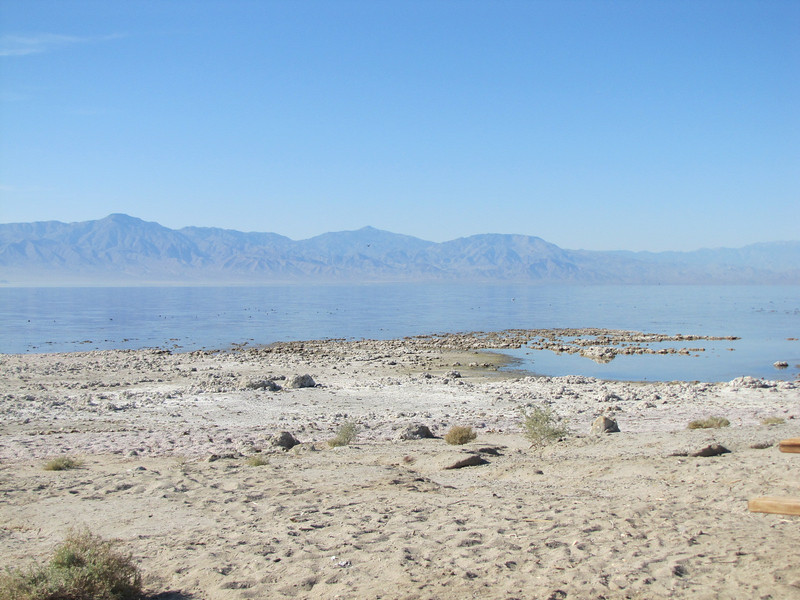
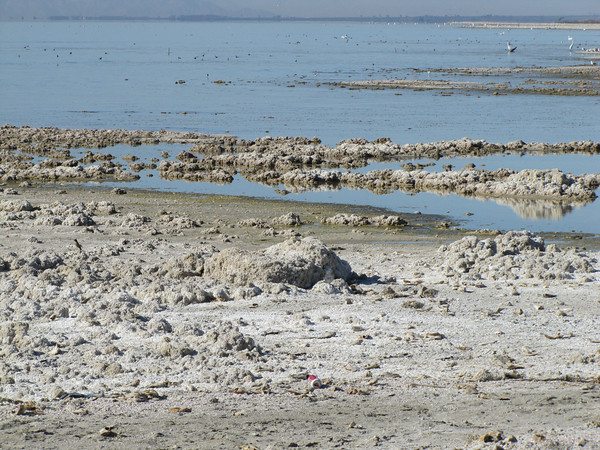
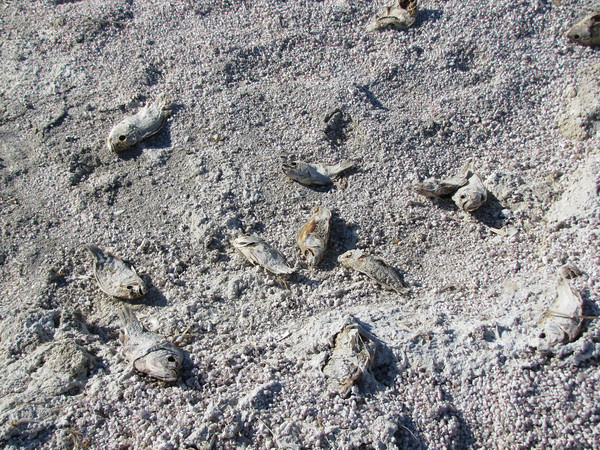
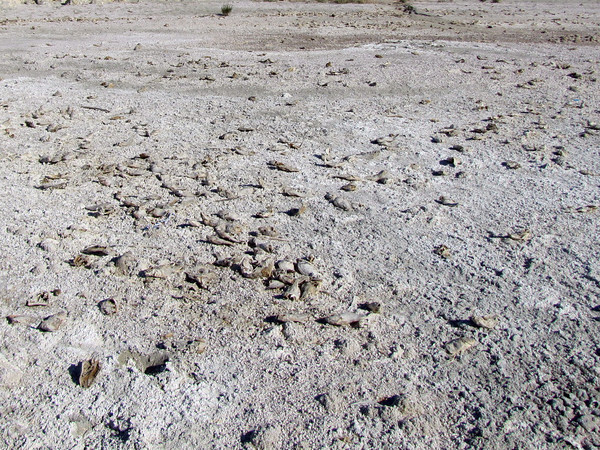
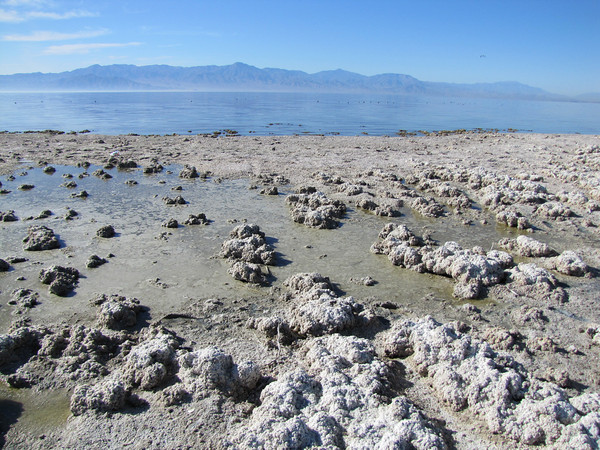
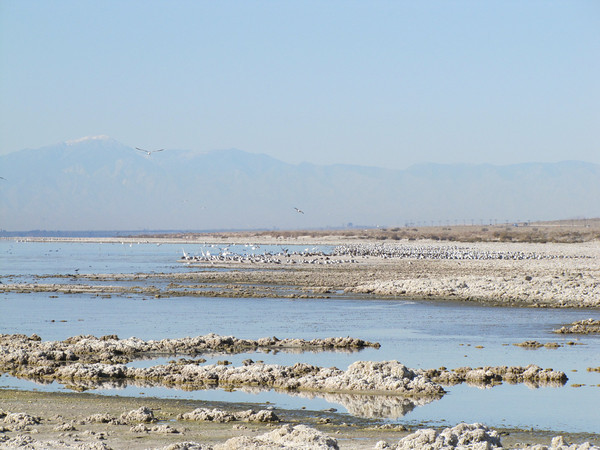
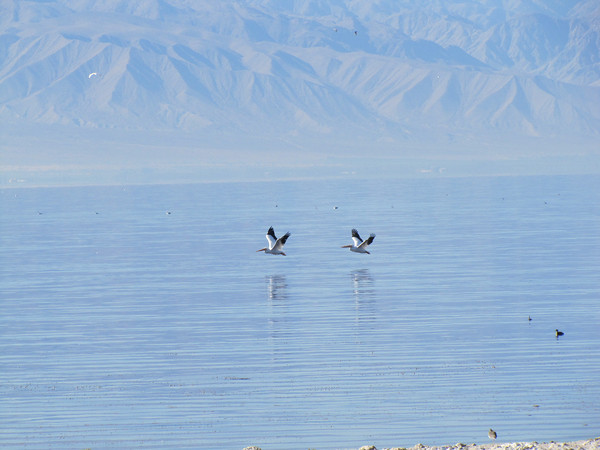
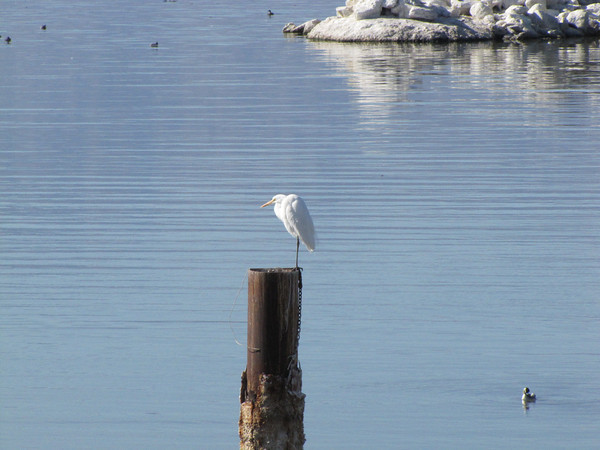
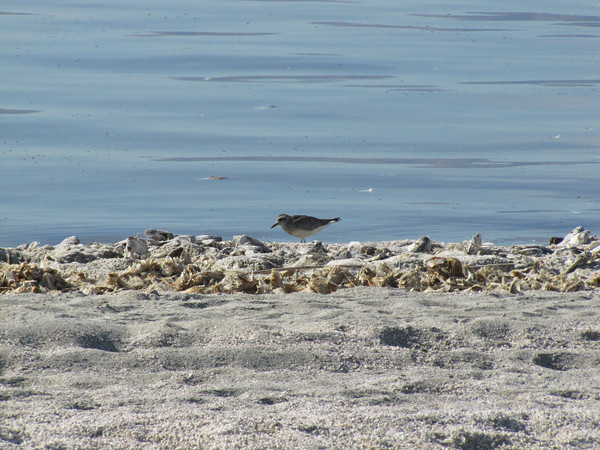
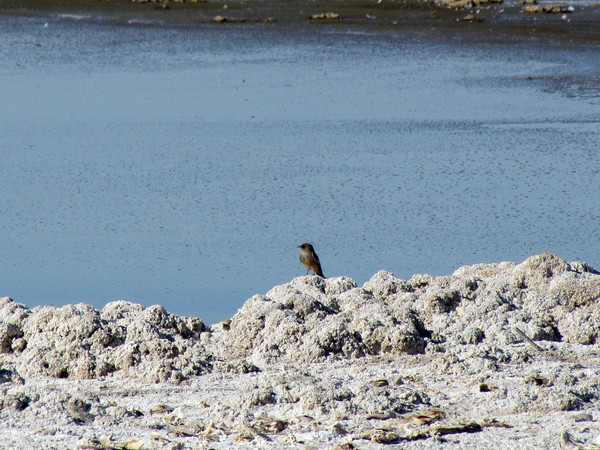
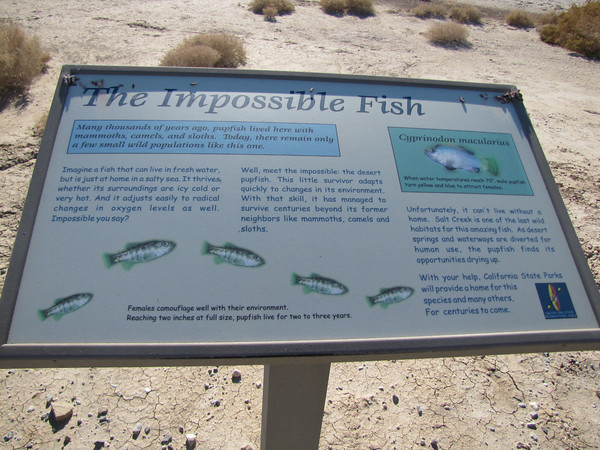
Hiring a local guide would be an excellent way to go. The whole place is so huge, and so overwhelming, that local knowledge would be invaluable. If you’re going back you better do it soon though – apparently the ‘sea’ is drying up. Hate to think what that means for the millions of birds that currently use it. Glad you enjoyed your trip. Ours was certainly memorable, but you couldn’t pay me to go there in July!
Just be glad you weren’t there in July!
Seriously, I think the Salton Sea is one of those areas where you have to make sure you know what your goals are, and in some cases, getting assistanace can help quite a bit. I have only been a birder since 2008, and in 2009, I was also in the area on business, and made the same decision to see the Salton Sea. I started doing some research on eBird, and clearly having only been birding for a little over a year, there were going to be an overwheliming number of new birds. On top of that, as you learned, the Salton Sea is an enormous area. So I reached out, and found myself a guiide for the day. Henry met me in Calipatria at dawn, and we literally birded until we ran out of sunlight. We saw 109 species that day, the largest single number I have seen to date, and the local knowledge was invaluable. There are those who think that having someone “help” you find birds cheapens your discoveries. But the way I looked at it was that I had a single day to spend, I wanted to maximize the opportunities to see new birds, and see a wide variety. The area is indeed very strange, and I know I wouldn’t take my wife there, but it remains one of the greatest days of birding in my life. The sheer volume of birds was just amazing at times.
By the way we, spent all our time on the south, and southeast edges of the lake, and the surrounding area.
Two and a half years later, there would be a lot fewer potential lifers, but I think I would go back, if it was fall or winter. The numbers and variety are just hard to beat.
Doesn’t look too much like anywhere in Canada… in winter!
That would be a very neat place to visit, it does look like the moons surface. Great photo of the Say’s Phoebe!